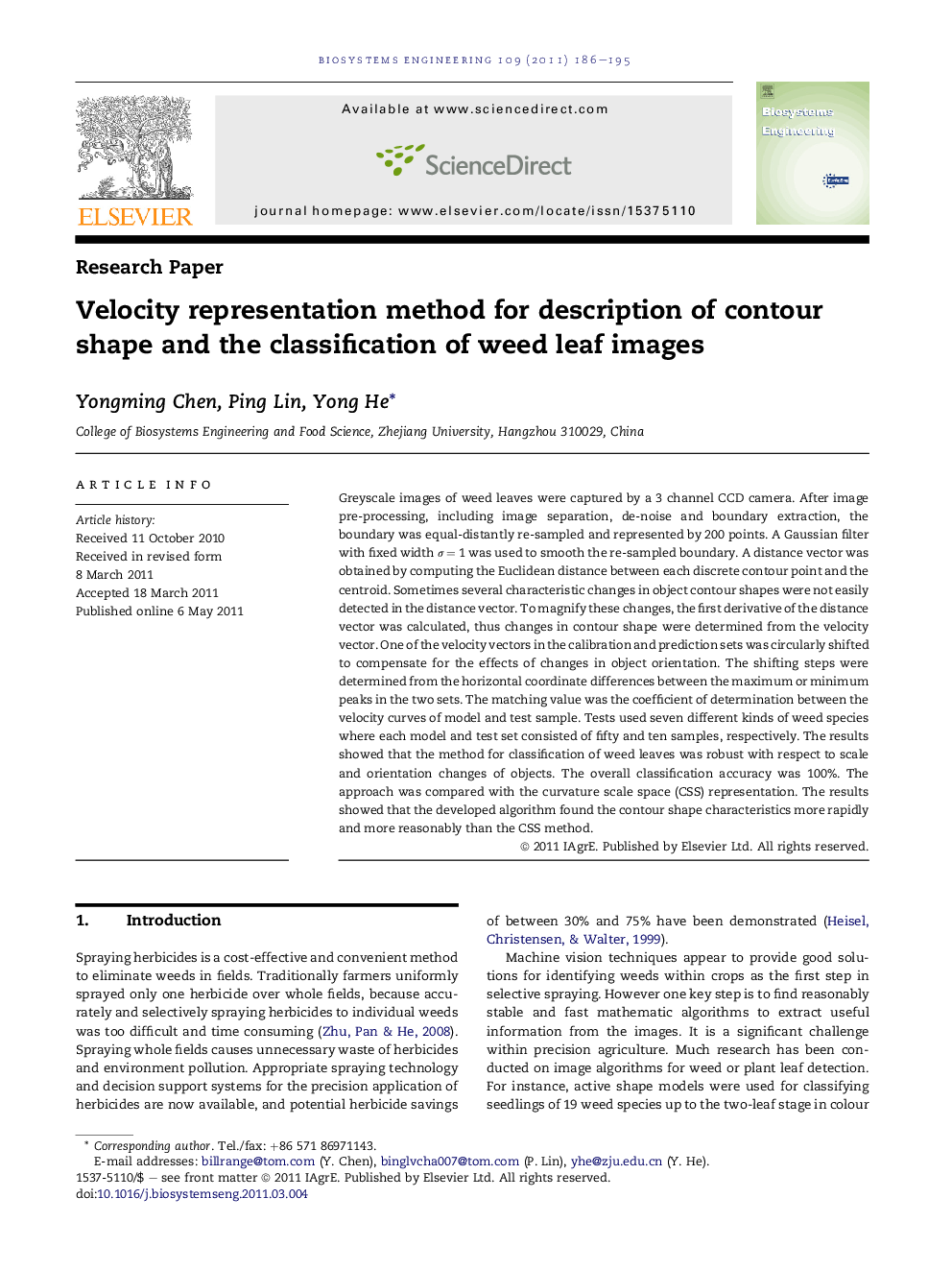| Article ID | Journal | Published Year | Pages | File Type |
|---|---|---|---|---|
| 1711652 | Biosystems Engineering | 2011 | 10 Pages |
Greyscale images of weed leaves were captured by a 3 channel CCD camera. After image pre-processing, including image separation, de-noise and boundary extraction, the boundary was equal-distantly re-sampled and represented by 200 points. A Gaussian filter with fixed width σ = 1 was used to smooth the re-sampled boundary. A distance vector was obtained by computing the Euclidean distance between each discrete contour point and the centroid. Sometimes several characteristic changes in object contour shapes were not easily detected in the distance vector. To magnify these changes, the first derivative of the distance vector was calculated, thus changes in contour shape were determined from the velocity vector. One of the velocity vectors in the calibration and prediction sets was circularly shifted to compensate for the effects of changes in object orientation. The shifting steps were determined from the horizontal coordinate differences between the maximum or minimum peaks in the two sets. The matching value was the coefficient of determination between the velocity curves of model and test sample. Tests used seven different kinds of weed species where each model and test set consisted of fifty and ten samples, respectively. The results showed that the method for classification of weed leaves was robust with respect to scale and orientation changes of objects. The overall classification accuracy was 100%. The approach was compared with the curvature scale space (CSS) representation. The results showed that the developed algorithm found the contour shape characteristics more rapidly and more reasonably than the CSS method.
► Velocity representation to describe contour shape and classify of weed leaf images. ► Developed algorithm easier and faster than curvature scale space (CSS) representation. ► Developed algorithm has high recognition accuracy & run speed. ► Approach can enhance the weed recognition speed and reliability. ► Method provided insights into the measurement of the similarity between leaves.
